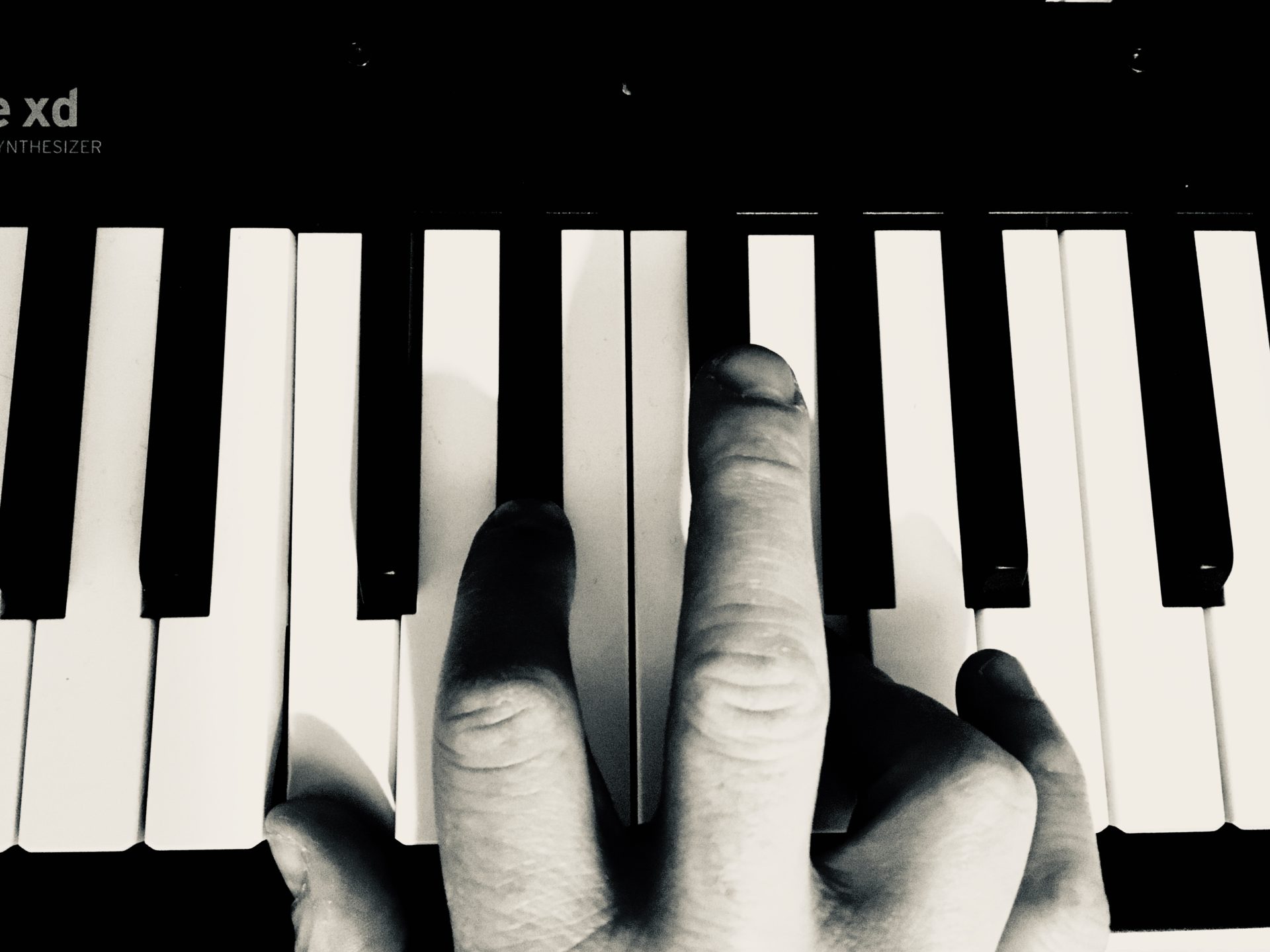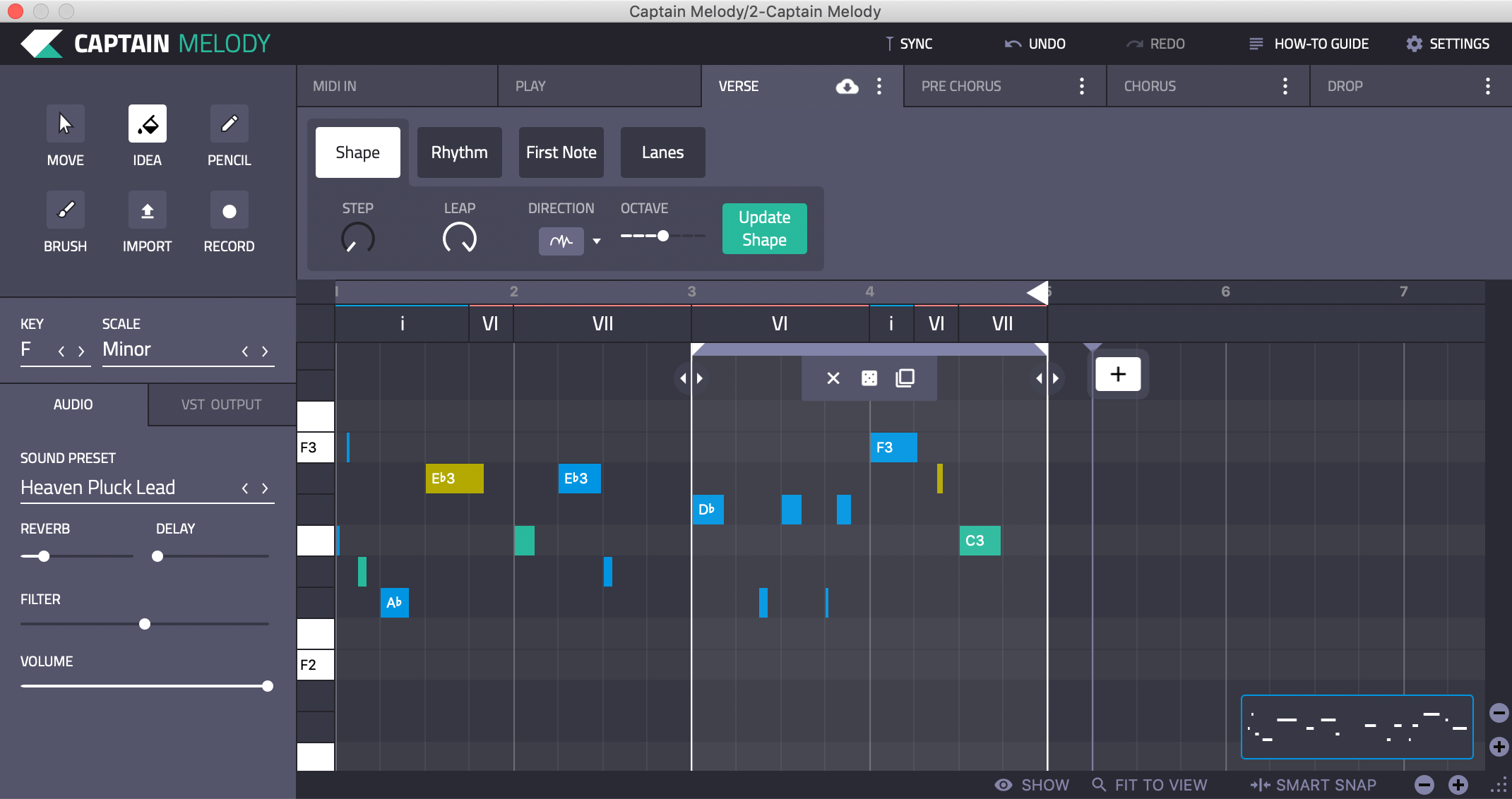How to write chord progressions that rule.

Behind every great song is a great chord progression. But how do you write good ones? What tools do you need, and how do you employ them? Is there a secret to writing chord progressions that rule, or is it pot luck?
What does a chord progression do?
Different chords elicit different feelings, and combining different chords creates a journey through feelings that can achieve more profound results. In other words, the sum of the parts is greater than the parts themselves.
A good chord progression can elicit feelings across the whole spectrum of human emotion – but the trick it to elicit the feelings that match the song’s direction. A chord progression is the basis for the rest of the song. It gives the melodies and harmonies performed by lead instruments a framework to work around. It’s like scaffolding on a building site. Without it, the builders can’t reach the same heights.
Choose the song’s direction and focus on it.
When we write chord progressions, we combine the key aspects of music in general; melody, harmony and rhythm. It’s important to combine these in your chord progression in such a way that the intention of your song is supported.
Poor songwriting is often the result of a muddled message. When the parts of a song don’t match the intention, or the intention is unclear in general, songs quickly fall apart. While all composers work differently, I’d say that good songs need to begin with a clearly defined idea that the composer maintains focus on. Much like making a chair, it’s vital to know what you’re trying to build before you start chopping wood!
Write chords faster with Captain Chords
- Write your own chord progressions
- Apply rhythms to your chords
- Set your Key and Scale for the entire song
- Explore different chords and discover your favorite combinations
- Compose music and write your own songs
- One touch plays 3 notes of the chords
The relationship between chords is as important as the chords themselves.
To write chord progressions that satisfy the brief of the song, it’s crucial that the journey between chords holds true. It’s also important that the key and scale match the intended emotion and drama. Chords have emotional profiles. Sometimes, such as with Diminished chords, this is obvious on first listen. A Diminished chord sounds tense and eerie, like it belongs in a horror movie soundtrack. But in other cases, the emotional profile of one chord depends on how it’s combned with others. Compare the following two chord progressions:
iii-V-ii-vi
This chord progression makes no sense. Listen to how jarring it feels as the progression loops. This is partly because the 1st and final chords don’t knit together with a pleasant harmony. There is also no root chord in the progression, which doesn’t help. It feels rootless, and discombobulating.
I-V-vi-IV
This progression is much more satisfying – in fact, it’s probably the most commonly used of all time. Two major chords, a minor and a final major make for a powerful, upbeat journey with a hint of tension – which is exciting. When it cycles, the listener is soothed and yet a little surprised. It leaps three scale degrees between the 1st and 2nd chord, and then three scale degrees back down between the final chord and the 1st again. This creates a degree of balance, which makes sense to the listener, while still being dramatic.
Why do we write chord progressions down in Roman Numerals?
You may be asking yourself why the above chord progressions are presented in numerals. When writing chord progressions on paper, Roman Numerals indicate the scale degree. Every key and scale has a set number of scale degrees, usually 7, but not always. Writing the chords in numerals enables composers to play the same chord progression in their choice of key and scale. For example, a singer may not have the range to sing in G, but would sound better in a lower key. Roman Numerals allow the same chord progression to be understood and reframed in a different key and/or scale.
Experimenting with key and scale allows you to find the perfect chord progression for your song.
Major or Minor?
Capital letter numerals represent Major chords, while small letters are for Minor chords. Different keys and scales have differing amounts of Minor or Major chords in the scale.
You can tell if the key is Minor or Major by the root chord, or ‘1’ chord. If it’s a capital ‘I’ it’s a major chord, for a major key. If it’s ‘i’ it’s a minor chord, and in a minor key. It gets a little more complicated in exotic scales, which are neither Major nor Minor. These are usually best left unexplored until you’re a litte more advanced, compositionally. But wait! Whith Captain Chords, you can use a huge range of scales that open up new chord combinations. You don’t even need to know deep music theory – simply try out new keys and scales and see what sounds good.

In Captain Chords, each key and scale brings up the relative scale degrees as easily selectable chords, making it super easy to add complementary chords to your chord progressions.
Decide on the genre to write a chord progression for in advance.
Some chord progressions are univerally applicable to most genres, while others have distinct genre applications. Think about this before you start writing. If you’re writing a feel-good pop song, it’s unlikely you’ll want to use a minor key. Likewise, if you want to write a Deep House track, you may find that major keys sound far too bright and happy. If you’re writing jazz or soul, the choice of key may not be as important as the chord combination, chord timing and rhythm. There are no absolutes when it comes to songwriting, but these considerations are important to make early, as they will help you get started and shape the direction. These are important considerations if you want to write chord progressions that convey the right mood in the right style.
Set up and resolution is everything.
If you take one thing away from this article, make it this: A good chord progressions sets the listener up for the journey on the first chord, and resolves the journey on the final chord. What happens in between is less important. Try taking everything except the first and last chord out of your progression. Does it still sound good when it cycles? Do you get goosebumps? Does it represent a meaningful setup and resolution? If you’ve answered yes, you can write the rest of the chord progression with confidence.
Tonal Vs Modal harmony.
The exact same progression can sound wildly different when played in different keys and scales.
Tonal harmony.
In a Tonal harmony, chords always relate back to the tonic, or root chord. Subsequent chords are described as Domininant or Subdominant, which relates to how powerfully they circulate around the tonic. This method is, in some ways, restrictive, as only a relatively few chord combinations sound pleasing. However, by using effective voice-leading, chord modulations, passing chords and chord substitutions, tonal chord progressions can still be exciting. Most modern pop songs use this method of writing chord progressions.
Modal harmony.
This type of composition is different. By focusing on a ‘mode’, the landscape of notes is restricted or expanded to cover the range of notes in the mode. But, most importantly, modal harmony is not about resolving to the root chord. It’s often seen as more meandering, or rootless. Having said that, there are some amazing melodic combinations to be found. Each mode, such as Dorian, Mixolydian or Phrygian, has a different notational ecosystem, and working through the mode can elicit exciting new results. Traditional, tonal harmony combinations often sound interestingly refreshed in new modes. Likewise, in modal harmony the ‘rules’ of tonal harmony can often be disregarded. Since relating back to the tonic is not the fundamental aim of a mode, it’s arguably more open to interpretation by the composer.
Here’s a perfect example:
Here’s that lovely I-V-vi-IV progression in C Major:
I-V-vi-IV in C Major
By transposing it to an obscure mode such as D Super Locrian, it is completely transformed. Much, much more sinister and foreboding!
I-V-vi-IV in D Super Locrian
I-V-vi-IV in G Mixolydian
Now compare that to the same progression, transposed to G Mixolydian. It’s returned to being a pleasant, inviting chord sequence. But this time it’s melancholy and plaintive, with a sense of restlessness.
As you can clearly hear, the key and scale of a song is massively important to the emotional quality of any chord progression. You can learn more about how the science behind transposition in our article How To Transpose Music.
However, In Captain Chords, you don’t need to understand the complex theory behind transposition. You can simply select any key, any scale and watch as the chord progression transposes like magic!
WATCH: Transposing into different scales and modes transforms the character of the same chord progression.
Write Chords Faster with Captain Chords
- Use Captain Plugins to write your own Chord Progressions, Hooks, Melodies and Basslines
- Export to your DAW
- Available on Mac and Windows.
Chord progressions are a platform for the melodies, vocals and bass.
When you write chord progressions that work, not only should they sound good on its own, they should also open up excellent melodic potential. This is because each chord has a number of notes within its palette. These are either chord tones – notes present in the chord itself – or nonchord tones. Nonchord tones spark a degree of tension against the chord in question. This can be powerful and exciting, but can quickly sound too tense. They’re best used with caution.
Because there are these chord and nonchord tones available in each chord, when you put chords together in a sequence there are suddenly multiple combinations of notes that you can use for melodies, basslines and vocals. Without chords to dictate the available notes, melodies can quickly unravel and lose impact. Chord progressions work to centre all the melodies in the song around the chords.
WATCH: This is demonstrated in the video below. Listen to how the melody maintains a grounded relationship with each chord that it passes over.
Keep it simple.
Most of the time, we’re trying to write chord progressions that satisfy the listener. We want them to feel excited, bt secure on the journey. That’s why it’s so important to avoid over-complication. If in doubt, take chords out.
Listeners aren’t usually thinking like composers. They don’t care if the progression has been used a thousand times before. If it suits the melody and emotional quality of the song, it’s perfect.
Why we love chord progressions that work in an expected motion.
As humans, we’ve been raised to expect certain things in our music. For those raised on a diet of Western music, this means we feel discombobulated by music that shakes us around too much. The motion of a chord progression is key to its success. If it’s continually confounding our expectations, it will feel like an unpleasant car-ride on rough terrain. The listener will be unsettled, and probably want to turn the song off.
While the exact science behind what consitutes ‘expected motion’ is a more advanced topic, it boils down to how it makes the listener (and composer) feel. When the chords match the desired energy and emotion of the song, you have a chord progression that works!
Captain Melody 5.0
- Write melodies that suit your chord progression
- Connect the Melody plugin with Chords plugin
- Apply different rhythms
- Apply arpeggiators that move your MIDI notes
- Adjust the tension between the Chords and Melody
- Hear the melody played with 100+ different sounds
Chord voicings, inversions, modulations and substitutions can spice up simple chord progressions.
To write a chord progression that stands out from the crowd, additional ways of playing expected chords can work wonders. By using inversions, suspended chords and modulating between notes inside the same chord, we can create tension and mystery in a standard chord progression. For more on Inversions, Suspended chords, 7th, augmented and diminished chords, see our articles on the topics.
Listen to how the same chord progression (i-III-v-iv in A Minor) is transformed during the second half of this clip. By adding 7ths, 6ths and an unusual chord structure, the sound of the progression is radically altered.

Don’t reinvent the wheel.
In the end, there are many ways to write chord progressions, and we can get deep in technical trickery. But fundamentally, the chords need to sound great together. That’s the bottom line. There’s no need to do anything more than ensure that the journey and cycle from start to finish sounds exciting and satisfying. It’s not as easy as it sounds!
Fortunately, in Captain Chords, it’s super simple to try out new ideas and sculpt your perfect chord progressions. Then, you can use the rest of the Captain Plugins to ride the chords. Write your own melodies, basslines and harmonies that perfectly complement the chords in no time!
About the author:


